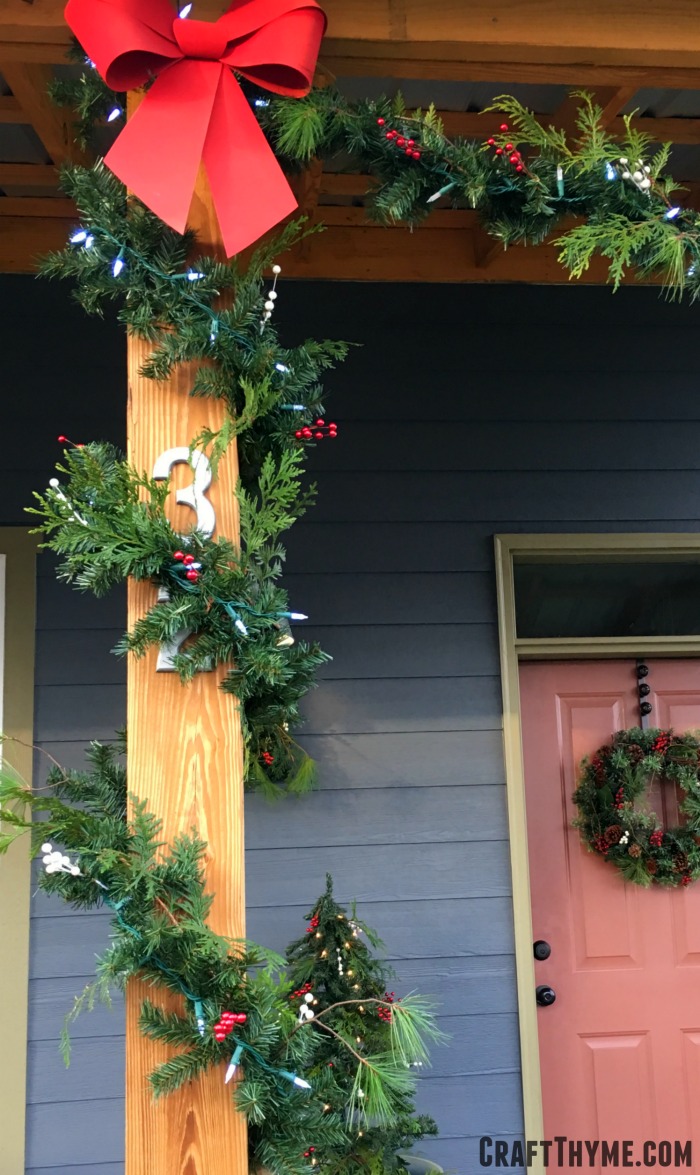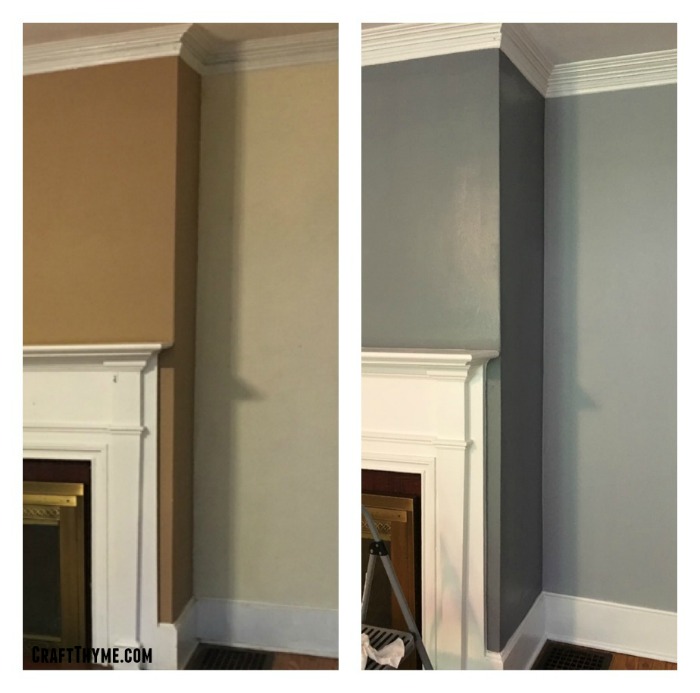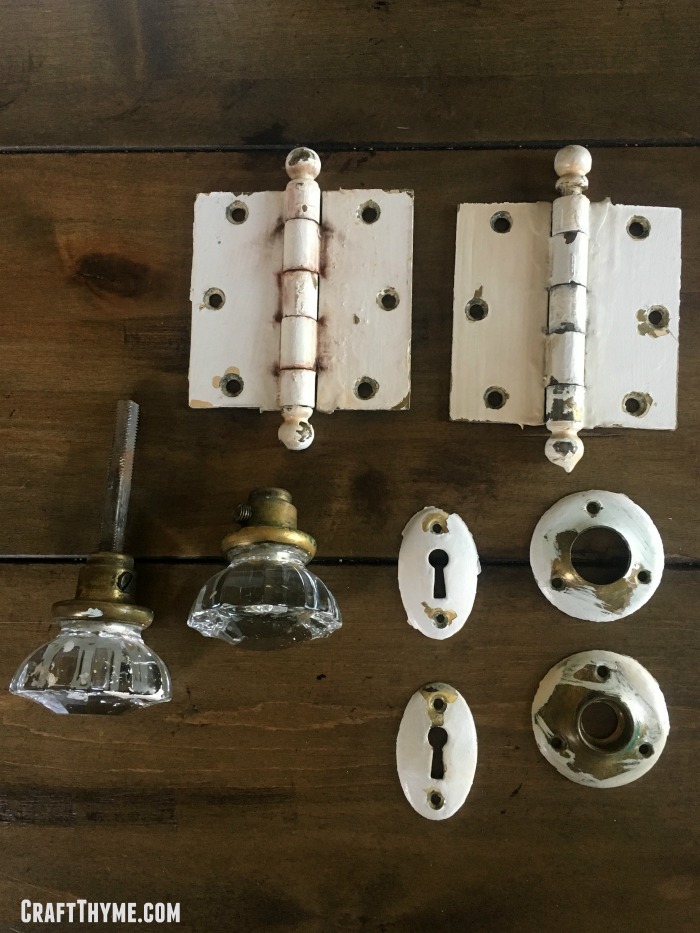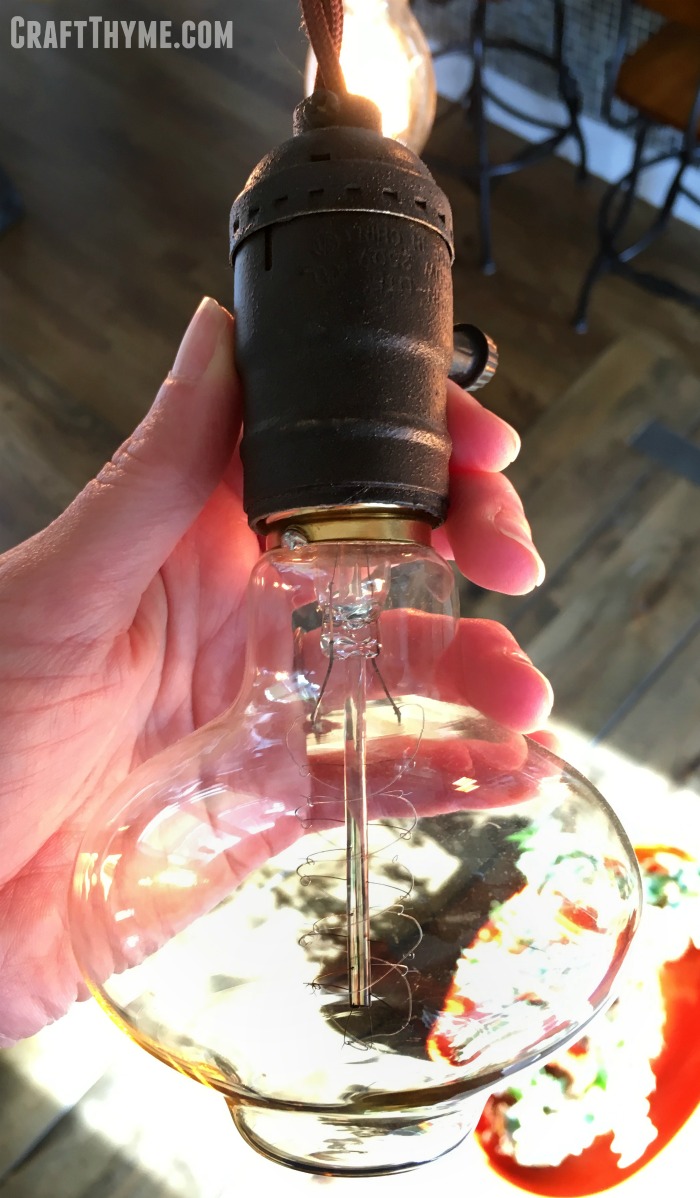
Did you know you can make artificial garland look real? Did you know you can do this for cheap or even free? Cheap artificial Christmas garland can look well… cheap or lackluster at best. While I really love to make real evergreen garland by hand (and happen to have one of the top tutorials on making evergreen garland and wreaths), sometimes, I just don’t have time or the will to churn out yards and yards of the real stuff. I am ahem… lazy occasionally. Luckily, some cheap rope garland and a little know how is all it takes to make artificial garland that looks real. Plus, the faux garland does tend to hold up better to the outdoor elements.
Tutorial on How To Make Artificial Garland Look Real
You will need minimal supplies. (Affiliate links may follow):
Step 1 Hang your Faux Evergreen Garland
Oddly enough, if you want the artificial garland to look real start by having it look like absolute crap. Hang that crimped piece of faux greenery awfulness as is. Yep, that is right, don’t fluff, bend, or do anything just put that puppy up. As you can see here I added some bows at the corner. You can also see here it looks very much like a dejected Christmas Garland. Once you have it in place then fluff. Why wait you ask? Because anywhere the garland is against a surface or hangs somewhere you will not see the back you are going to want to fluff all the fake greenery forward. This is also a great time to add lights to your artificial garland if you plan on having it lit.

Step 2 Grab Some Greenery
Here is where you sneak into your neighbors yard ask your neighbor nicely if you can take a few branches off of their evergreens. White pine, leyland cypress, heck any type of evergreen will do. Also ivy, magnolia leaves, dried hydrangea, grasses, pine cones, and bittersweet berries make great additions to the garland. You will not need much of these items. I used what I could shove in two grocery bags to do the entire porch and add to the artificial tree, tear drop garlands, and wreath. When you have collected all your items cut the branches into 4-6 inch lengths. Try to get as many branch tips as possible. Blunt cut ends will work but need a little more finesse to work in nicely.
If you bought any floral picks or a few branches now is the time to cut them into similar sized items. All the red and white berries you see where cut from 3 dollar store faux floral Christmas stems.
If you are working with various types of greenery sort everything in piles by type.
Step 3 Making that Faux Garland Fabulous
Now that you are likely covered in pine needles and resin it is time to make the faux, fabulous. Here is when you will finally make artificial garland look real. Start with a single type of evergreen (example your pile of white pine) and start adding them into your greenery at a somewhat even spacing. To add (complicated steps ahead):
- Place a piece of greenery against the artificial garland you can simply twist a free piece of the fake branch around the greenery.
Surprisingly, this will secure the items. Seriously! Mine held up in the rain, sun, and wind. Now you may be wondering why just place one type of evergreen at a time? Well, too many times I get over zealous and put way too much of one type at the beginning and then run out by the end of the garland. It may seem to take awhile to make multiple passes to turn your artificial garland into the real thing but the end result looks balanced. Plus it takes a lot less time than putting greenery up, stepping back, taking it down and moving it, stepping back again, etc… You get the picture!
Blunt ends of cut greenery can be hidden behind the garland or wrapped deep in the greenery. While, all this seems like “work” I can assure you that it is far less effort than making a real evergreen garland from scratch.
Step 4 Optional Step
If you really want your artificial garland to pop throw in some more faux items. No, I’m not joking. Surprisingly, some faux on faux action pumps your artificial garland up in a way that makes it seem more real. Adding in more pieces of faux garland, bits of faux berries, or other Christmas florals give it some umph!
Honestly, this is all it takes to make some fabulous garland. A little borrowed greenery and the ability to twist some wire makes for a beautiful and cheap Christmas decoration. So take your knowledge and make some artificial garland look real!


































